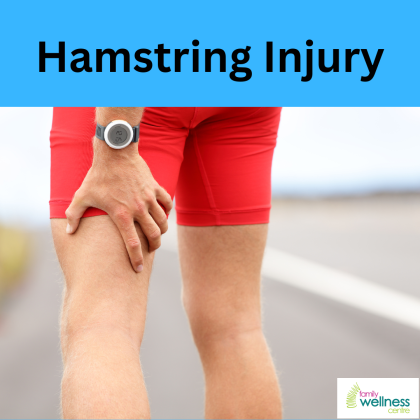Can Acupuncture help a hamstring injury?
Acupuncture involves the insertion of thin needles into specific points on the body to stimulate nerve endings, muscles, and connective tissues.
In contrast to dry needling, qualified Acupuncturists have more in depth training around needle technique and multiple strategies to solve a muscular problem.
While acupuncture is not a replacement for medical treatment, it can be used as an adjunct therapy to drugs, physiotherapy or osteopathy.
It is a useful method for a slow-healing hamstring injury, as it aids tissue healing. Another factor is that doctors do not want patients taking strong pain medication long term. A multi-strategy approach, is a clever one for rehabilitation.
Here's how acupuncture may help in the recovery from a hamstring injury and associated inflammation or tears:
Pain Relief and Muscle Relaxation:
Pain Management (general): Acupuncture stimulates the release of endorphins, the body's natural pain-relieving chemicals.
By targeting specific acupuncture points away from the hamstring but definitely related to pain modulation, acupuncture can help reduce pain associated with hamstring injuries.
Pain Management (local): Applying acupuncture in the local area of the upper leg may also benefit recovery.
This is due to aiding circulation around any contusion, scar tissue from a previous injury and relaxing the myofascia.
Muscle Relaxation: Using Acupuncture, you're structurally releasing tight muscle fibres.
As a result, this helps relax tight muscles and reduce muscle spasms commonly experienced after a hamstring injury. Consequently, it may aid in restoring flexibility and range of motion in the injured hamstring.
Reduction of Inflammation and Swelling:
Anti-inflammatory Effects: Acupuncture has been shown to have anti-inflammatory effects by modulating the body's inflammatory response.
Studies suggest that acupuncture can reduce levels of pro-inflammatory cytokines and promote the release of anti-inflammatory substances, helping to alleviate inflammation and swelling in the injured hamstring.
Enhanced Healing and Tissue Repair:
Promotion of Blood Flow: Acupuncture promotes blood circulation to the injured area, which can facilitate the delivery of oxygen, nutrients, and immune cells necessary for tissue repair and regeneration.
Improved blood flow may expedite the healing process and minimise scar tissue formation in the hamstring muscles.
Evidence and Clinical Trials:
While there is limited clinical evidence specifically focused on acupuncture for hamstring injuries, several studies have investigated acupuncture for musculoskeletal pain and sports injuries in general:
- A systematic review published in the Journal of Orthopaedic Surgery and Research in 2015 analyzed the effectiveness of acupuncture for sports-related musculoskeletal injuries.
- The review concluded that acupuncture showed promising results in reducing pain and improving function in athletes with various musculoskeletal injuries, including strains and sprains.
- A randomized controlled trial published in the American Journal of Sports Medicine in 2010 examined the effects of acupuncture on muscle flexibility and functional performance in athletes with hamstring tightness.
- The study found that acupuncture treatment led to significant improvements in hamstring flexibility and functional outcomes compared to sham acupuncture and control groups.
- A meta-analysis published in the British Journal of Sports Medicine in 2015 assessed the effects of acupuncture on pain relief and functional improvement in patients with chronic musculoskeletal pain.
- The analysis indicated that acupuncture was superior to sham acupuncture and conventional treatment for reducing pain intensity and improving physical function in patients with various musculoskeletal conditions.
To conclude, while further research is needed, existing evidence suggests that acupuncture may offer benefits to injuries. Specifically, in the aspects of pain management, muscle relaxation, reducing inflammation and promoting tissue repair. This includes hamstring strain.
As part of a thorough treatment plan, acupuncture can complement other therapies such as rest, physiotherapy and exercise physiology to support the recovery process. The aim with a multi-strategy approach, is to optimise recovery outcomes from hamstring injuries.
It's essential to consult with a qualified acupuncturist and healthcare professional to determine the most appropriate treatment approach based on individual needs and injury severity.
Other blog posts on Hamstring Injury:


